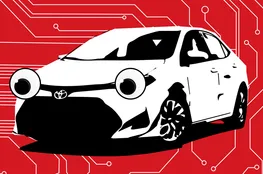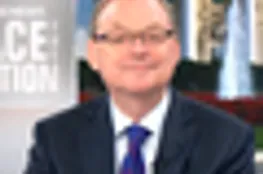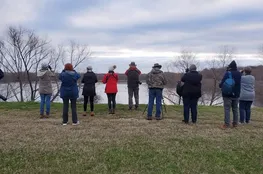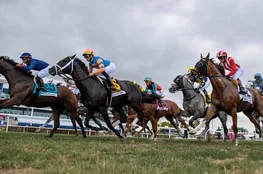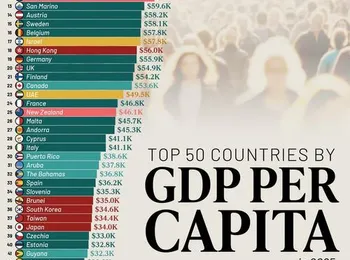For farmers who grow anything but soybeans and corn in Illinois, buying crop insurance is nearly impossible. Even an insurance agent couldn’t figure out how to safeguard his vegetable and poultry farm against unpredictable weather and plain old bad luck. Ed Dubrick, a first-generation farmer, worked at a local crop insurance agency for two years as he was starting up his small operation. He wanted the same federally subsidized safety net for his grapes, raspberries, asparagus and tomatoes that he was easily selling to row crop farmers. But the bureaucracy was insurmountable. "After probably two dozen phone calls and at least 100 hours put into trying to figure out what I needed to do, I decided crop insurance was too complicated for my diversified farm. It really felt like an instance of the blind leading the blind," said Dubrick, a veteran who runs DuChick Ranch on 7 acres in Cissna Park, a small village 100 miles south of Chicago. Crop insurance is intended to support "food security for American consumers and economic stability for rural America," according to the U.S. Department of Agriculture. But it doesn’t cover all crops equally. It’s primarily used by farmers growing the nation’s four major commodities: corn, soybeans, wheat and cotton. And Illinois is the nation’s No. 1 producer of soybeans and No. 2 producer of corn.
Reporting for this story was supported by the MIT Environmental Solutions Journalism Fellowship.Only 10 insurance policies were sold to specialty crop farmers last year in Illinois, according to a federal agriculture department census. Meanwhile, nearly 147,000 policies were sold to corn and soybean farmers. "Does this mean that only 10 farmers in Illinois would benefit from (specialty crop insurance). Absolutely not," Dubrick said.The federally subsidized program is administered by 12 approved insurance conglomerates who profit more from selling single-crop policies to large operations than multicrop policies to small fruit and vegetable farms. Half of the insurers are subsidiaries of foreign-held multinational corporations based in Japan, Switzerland, Canada and Australia. The Tribune is launching a series of special reports analyzing the hurdles many farmers face in trying to be good stewards of the land as climate change intensifies. Crop insurance is one of these barriers.
As currently structured, it helps big farms stay big and keeps fledgling farms small and vulnerable. It’s an invisible hand nudging Illinois farmers to cultivate land dominated by neat rows of corn and soybeans. But aggressive farming of only two crops has gradually eroded and depleted nutrients from the Midwest’s rich soil. To compensate, grain and bean growers have become increasingly dependent on fertilizers and drainage systems that contaminate water supplies and reduce soil fertility, said Illinois State Climatologist Trent Ford. "The corn and soybean yields are going up but the question is, how many more inputs are we having to put into the system in order to do that? ” he said. "Everybody sprays with fungicides now at least twice a year no matter how wet we’ve been because they just know that’s what you do.” Spraying a field in Urbana on May 23, 2024. (E. Jason Wambsgans/Chicago Tribune)Climate change is a wild card that threatens to bring severe drought one year and heavy downpours the next. Farms only growing one or two crops also have less flexibility to adapt.Diversifying harvest is a natural form of insurance, said Anne Schechinger, Midwest director of the Environmental Working Group, a non-profit organization that advocates for environmental protection. "It’s a fundamental principle of sustainable agriculture,” she said. “But the crop insurance system actively discouages it.” Schechinger added, “The system rewards monoculture, not biodiversity.” She took to BlueSky, an X competitor: “how about the $2B taxpayers send to private crop insurance companies/agents each year just to operate the program?” The government paid $2.2 billion in administrative and operating subsidies to crop insurance providers in 2022. It doleed out another $1.5 billion in underwriting gains, which equal the difference between the premiums collected and losses paid out. “I think (crop insurance) should be on DOGE’s hit list, but not the money that’s going to farmers,” Schechinger told the Tribune later that day. The USDA did not respond to requests for comment.
The comprehensive package of legislation that dictates agriculture policy is supposed to be updated every five years, but the bill that the country is operating under expired in 2023. A gridlocked Congress gave it two one-year extensions. The new expiration date is Sept. 30. Senate Democrats included the Whole Farm Revenue Protection Program Improvement Act in their latest farm bill framework. Meanwhile, a competing farm bill introduced by House Republicans sidetesteed the issue. U.S. Rep. Eric Sorensen, a former meteorologist who represents parts of north and central Illinois, was one of four Democrats on the House Agriculture Committee who voted in favor of the Republican bill. His office did not respond to requests for comment. U.S. Rep. Eric Sorensen talks with Rock Island County farmers and Illinois Farm Bureau leaders at a family farm in Taylor Ridge, Illinois, on Oct. 14, 2024. He discussed the status of the farm bill, the effects of severe weather on farms and Sorensen’s efforts on behalf of Illinois producers. (Nam Y. Huh/AP)Neither the House Republican nor Senate Democrat proposals sought to rein in the insurance companies’ claim to taxpayer dollars. "The (National Sustainable Agriculture Coalition) doesn’t have a policy that advocates blowing up the public-private partnership because of just how radical that is,” said Hackett, the coalition’s policy specialist. “You don’t touch it.” Illinois Sen. Dick Durbin, a Senate Agriculture Committee member, had once championed a bill that would reduce crop insurance premium support for top-earning farmers. Instead of subsidizing 60% of the policy, the federal government would subsidize 45%. He abandoned the proposal, which came to be nicknamed “the Durbin amendment,” in the latest farm bill negotiations after it failed to garner enough votes to include it in the two earlier farm bills. The senator and his team declined to comment on the matter when approached by the Tribune in April shortly before he announced his intent to retire. However, in recent months, his team shifted its attention from high-earning farmers to the impact of climate change related losses on the crop insurance industry. Durbin met with the Illinois Corn Growers Association in March to discuss how to insulate Illinois from premium hikes as southern states see more crop failures and file more claims.
Canary in the coal mineCrop insurance companies are already strategizing how to minimize their losses as climate change intensifies. Since they receive federal subsidies, they cannot withdraw from markets as easily as home insurance providers have in fire-, hurricane- and flood-prone areas. Last year, the federal government blocked insurance providers’ attempts to pull out of West Texas, a region that’s been scorched by heat and drought. “This may be the first proverbial canary in the coal mine,” said Jonathan Coppess, a professor of agricultural policy at the U. of I. and an Agriculture Department appointee under the Obama administration. “It’s not an imminent collapse, but it is indicative of a very real, big and growing problem. Why are we insuring areas that cannot produce a crop year in and year out? I think that’s a real challenge for the system.”As West Texas and other regions start feeling the impacts of climate change more intensively, premiums could rise nationwide. States like Illinois, which aren’t anticipated to experience as intense extremes, may decide crop insurance isn’t worth it for them, leaving only those in high-risk areas buying policies. This, Coppess warns, could be how the crop insurance industry comes tumbling down. The USDA did not respond to requests for comment, nor did U.S. Sen. Tammy Duckworth or Reps. Mike Bost, Nikki Budzinski and Mary Miller, who represent Illinois on the House Agriculture Committee.
Ed Dubrick builds a mobile chicken coop while working on his farm on May 2, 2025, in Cissna Park. Dubrick plans to use the fenced coop for chickens to live free range on his 5 acres. “Peas like cool weather, but tomatoes and peppers want warm weather, and peppers do really well in drought. Tomatoes do better with some more moisture,” he said. “The diversity is my insurance.” But Dubrick would feel more secure if there was a form of crop insurance that worked for him. “Just point-blank honesty, the revenue safety net that we’ve leaned on the most is that my wife and I both have off-farm jobs,” Dubrick said. “We can’t lean into the farm because there’s just too much unknown. Some years, I could be full time on the farm, and then the next year I would go bankrupt.” Karina Atkins is a freelancer.




